→E due to uniformly charged sphere of radius R as a function of distance from its centre is represented by:

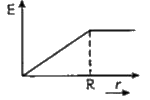
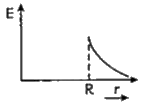
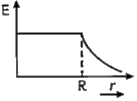
The correct Answer is:A
To determine the electric field →E due to a uniformly charged sphere of radius R as a function of distance from its center, we can analyze the situation in two distinct regions: inside the sphere (for r<R) and outside the sphere (for r≥R).
1. Identify the Charge Distribution:
- Consider a uniformly charged sphere with total charge Q and radius R.
2. Electric Field Inside the Sphere (r<R):
- According to Gauss's Law, the electric field inside a uniformly charged sphere is zero. This is because any Gaussian surface inside the sphere encloses no charge.
- Therefore, for r<R:
E=0
3. Electric Field Outside the Sphere (r≥R):
- For points outside the sphere, we can treat the entire charge Q as if it were concentrated at the center of the sphere.
- Using Gauss's Law, the electric field at a distance r from the center (where r≥R) is given by:
E=kQr2
- Here, k is Coulomb's constant.
4. Summary of the Electric Field:
- The electric field →E as a function of distance r from the center of the uniformly charged sphere can be summarized as:
E(r)={0if r<RkQr2if r≥R
Final Answer:
The electric field →E due to a uniformly charged sphere of radius R is:
E(r)={0if r<RkQr2if r≥R
- Consider a uniformly charged sphere with total charge Q and radius R.
- According to Gauss's Law, the electric field inside a uniformly charged sphere is zero. This is because any Gaussian surface inside the sphere encloses no charge.
- Therefore, for r<R:
E=0
- For points outside the sphere, we can treat the entire charge Q as if it were concentrated at the center of the sphere.
- Using Gauss's Law, the electric field at a distance r from the center (where r≥R) is given by:
E=kQr2
- Here, k is Coulomb's constant.
- The electric field →E as a function of distance r from the center of the uniformly charged sphere can be summarized as:
E(r)={0if r<RkQr2if r≥R
The electric field →E due to a uniformly charged sphere of radius R is:
E(r)={0if r<RkQr2if r≥R
Topper's Solved these Questions
- BOOK - EDUCART PUBLICATIONCHAPTER - SAMPLE PAPER 5EXERCISE - SECTION - C6videos
SAMPLE PAPER 5
- BOOK - EDUCART PUBLICATIONCHAPTER - SAMPLE PAPER 5EXERCISE - SECTION - C6videos
SAMPLE PAPER 5
- BOOK - EDUCART PUBLICATIONCHAPTER - SAMPLE PAPER 3EXERCISE - SECNTION -C6videos
SAMPLE PAPER 3
- BOOK - EDUCART PUBLICATIONCHAPTER - SAMPLE PAPER 6EXERCISE - Section-C6videos
SAMPLE PAPER 6
Similar Questions
If the potential at the center of a uniformly charged sphere of radius R is V then electric field at a distance r from the center of sphere will be (r<R) : -
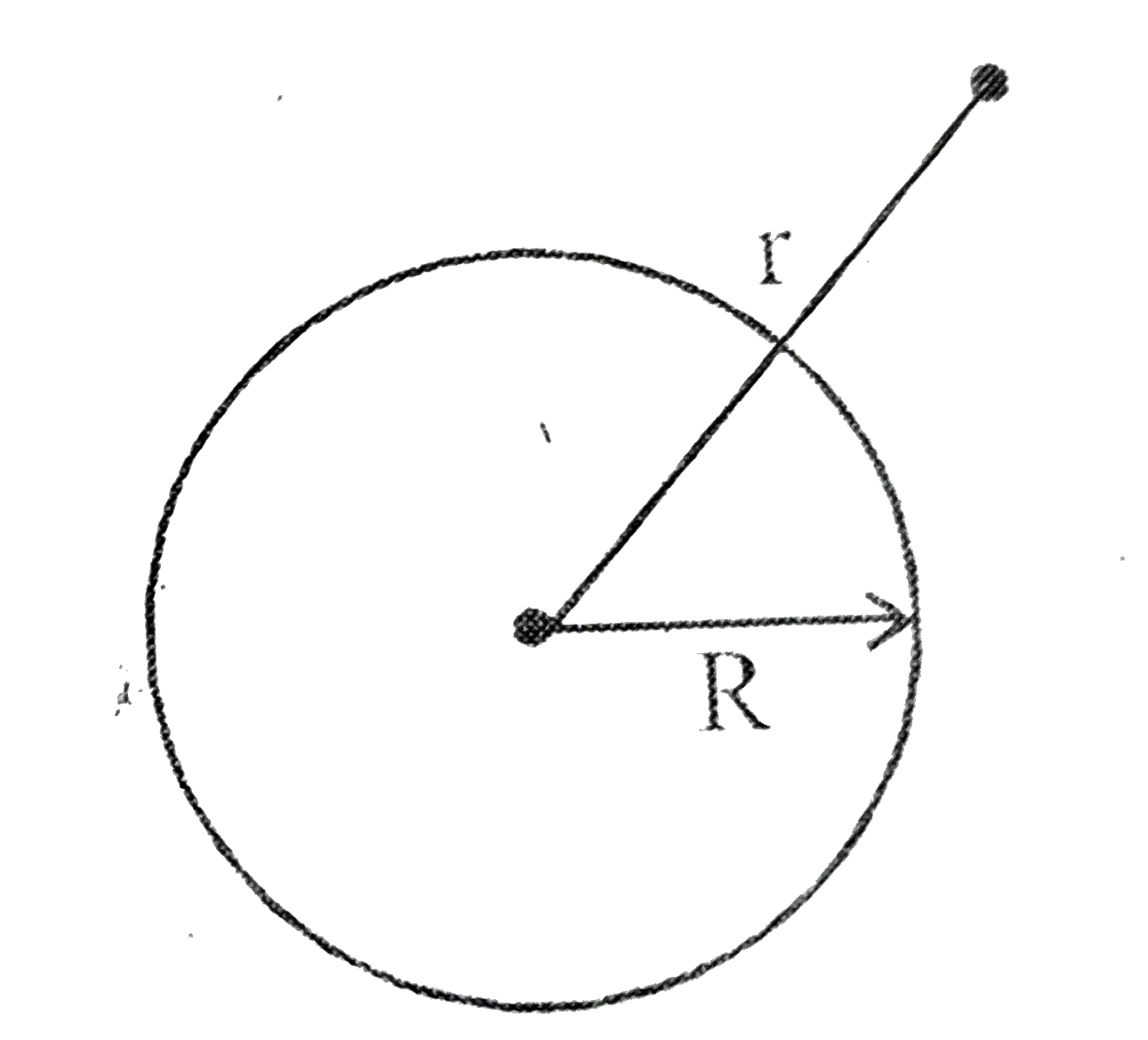 View Solution
View SolutionThe maximum electric field intensity on the axis of a uniformly charged ring of charge q and radius R is at a distance x from the centre of the ring.The value of x is
View Solution
Knowledge Check
- Question 1 - Select One
The electric field due to uniformly charged sphere of radius R as a function of the distance from its centre is represented graphically by
A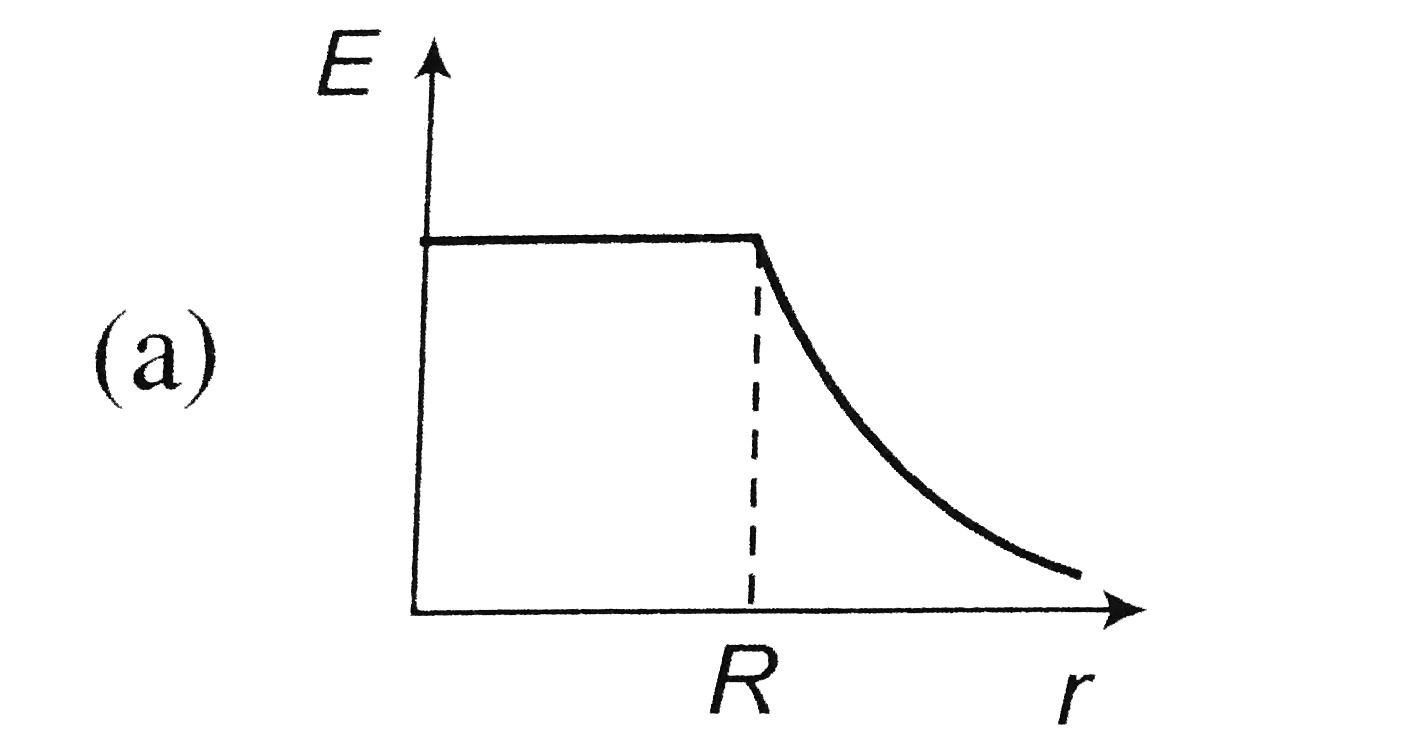 B
B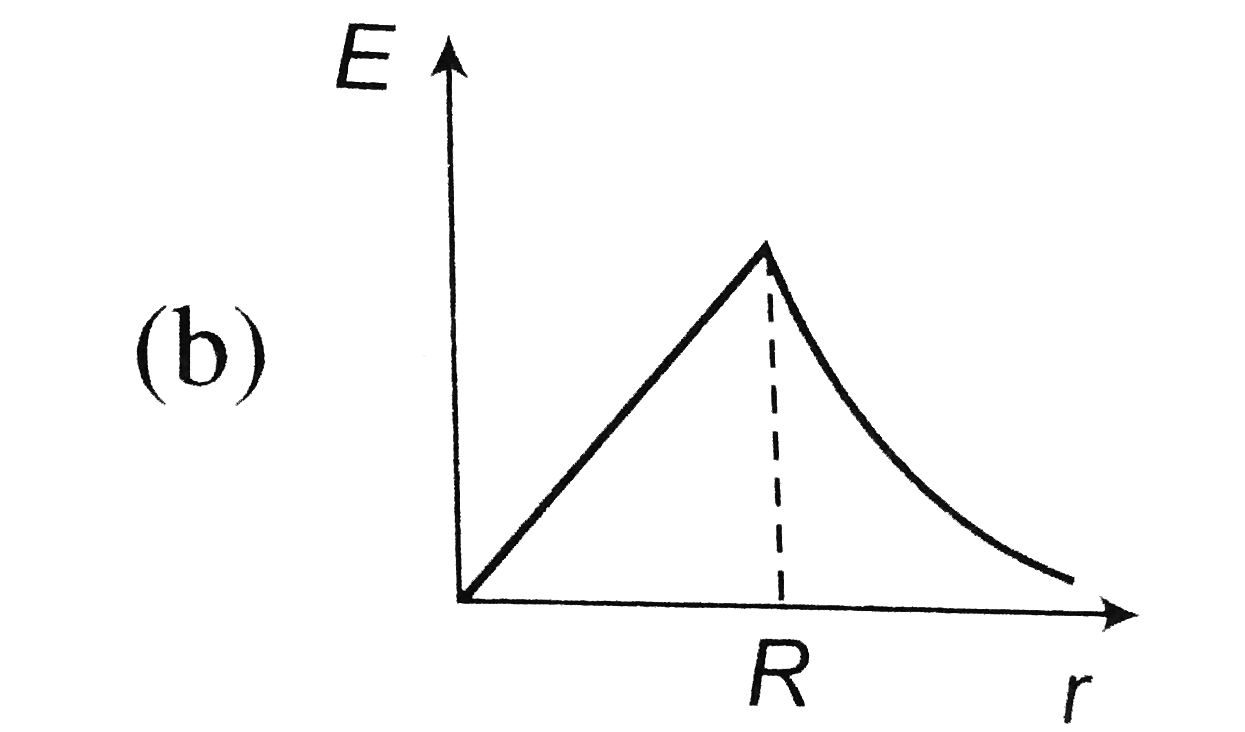 C
C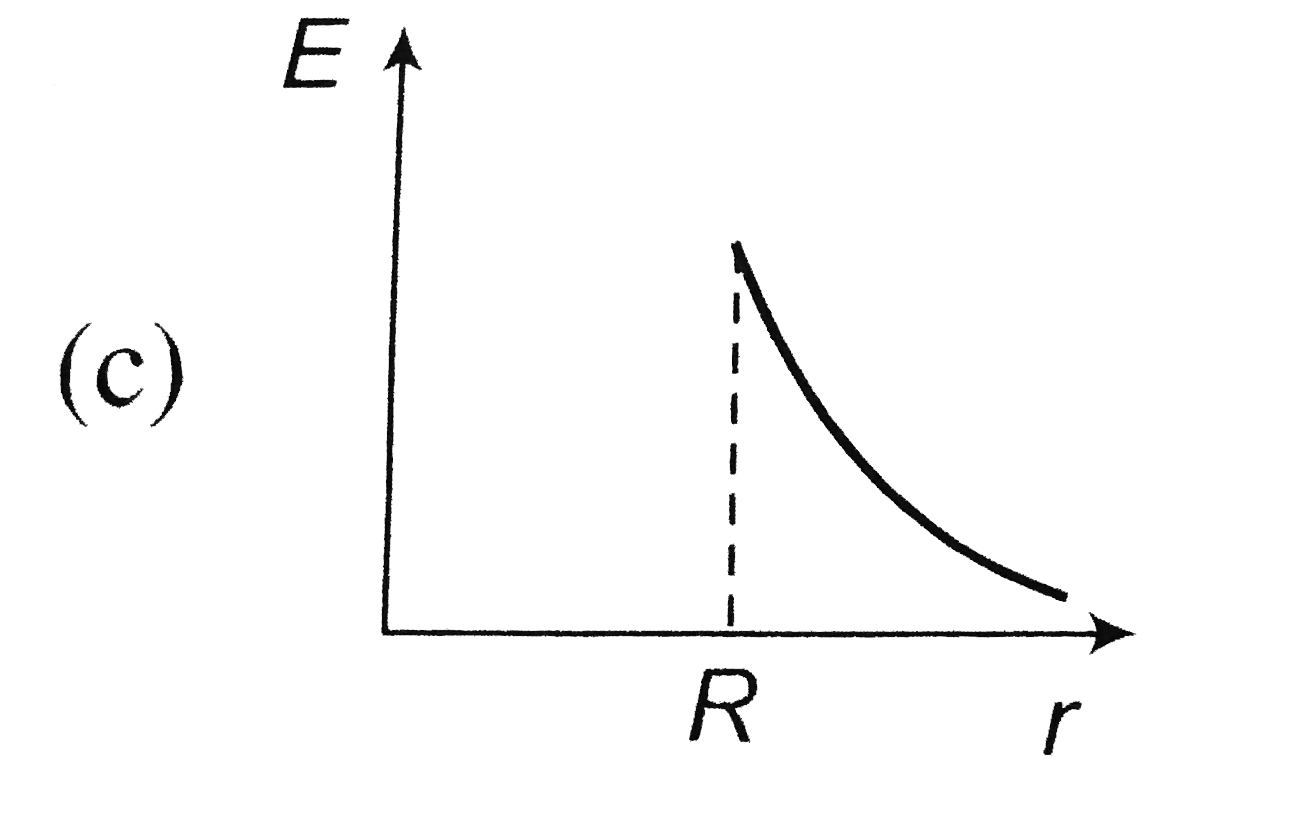 D
D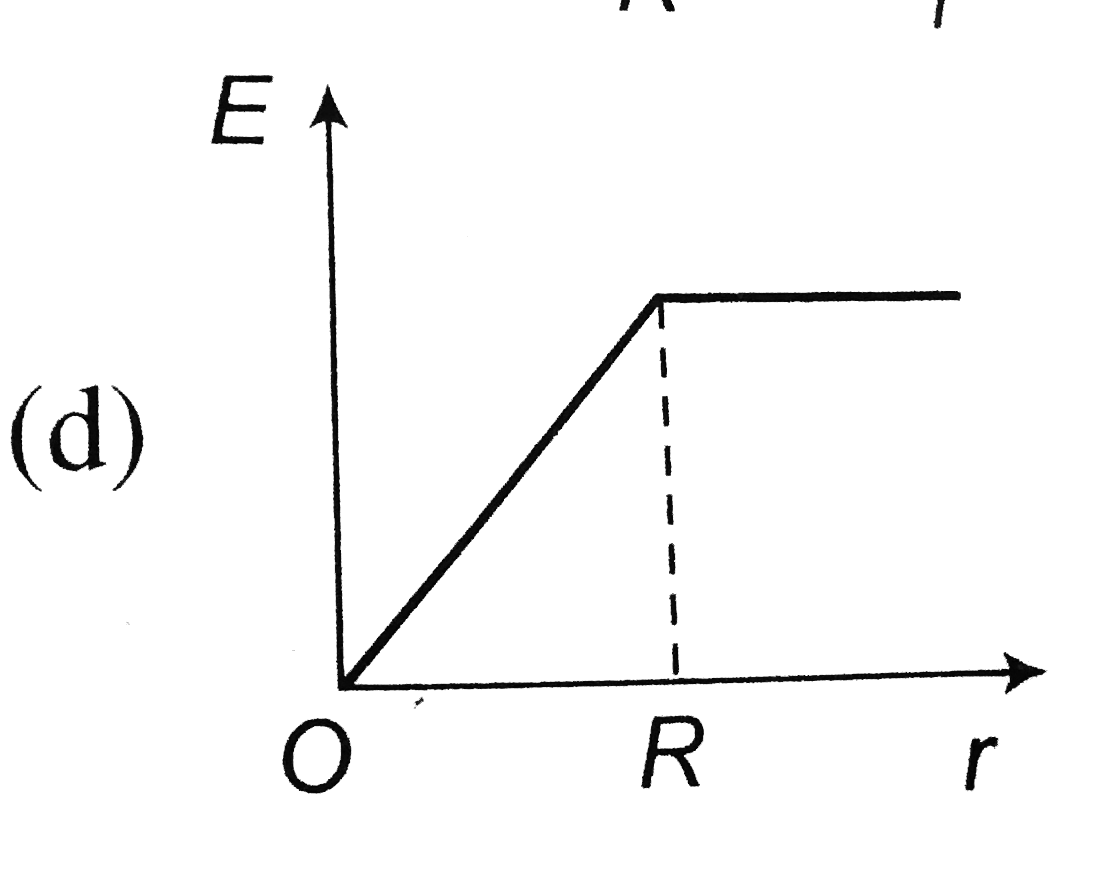
- Question 2 - Select One
Graphical representation of electric field due to uniformly charged sphere of radius R as function of distance from its centre is given by:
A B
B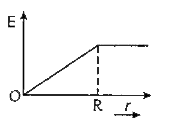 C
C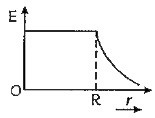 D
D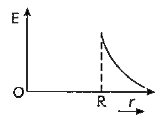
- Question 3 - Select One
Which of the following graph represents the variation of electric field E due to a thin charged spherical shell of radius R as a function of the distance r from the centre of the shell?
A B
B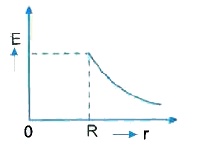 CD
CD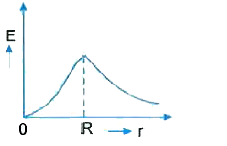
If the potential at the centre of a uniformly charged hollow sphere of radus R is V, then electric field at a distance r from the centre of sphere will be (r>R).
 View Solution
View SolutionThe electric field intensity at a distance 20cm from the centre of a uniformly charged non conducting solid sphere of radius 10cm is E.Then what is the electric field intensity at a distance 5cm from the centre it will be.....
View SolutionThe electric intensity due to a uniformly charged infinite cylinder of radius R , at a distance r(>R) , from its axis is proportional to
View SolutionA nonconducting sphere with radius a is concentric with and surrounded by a conducting spherical shell with inner radius b and outer radius c. The inner sphere has a negative charge uniformly distributed throughout its volume, while the spherical shell has no net charge. The potential V (r) as a function of distance from the center is given by
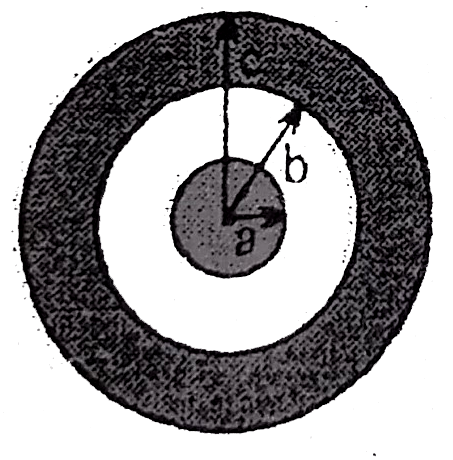 View Solution
View SolutionAssertion: Electric potential on the surface of a charged sphere of radius R is V. Then electric field at distance r=R2 from centre is V2R. Charge is distributed uniformly over the volume.
Reason: From centre to surface, electric field varies linearly with r. Here r is distance from centre.View Solution

